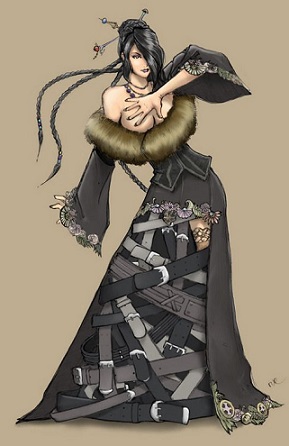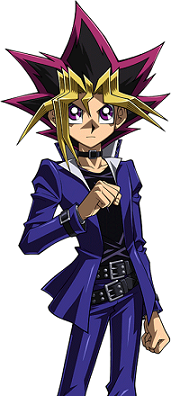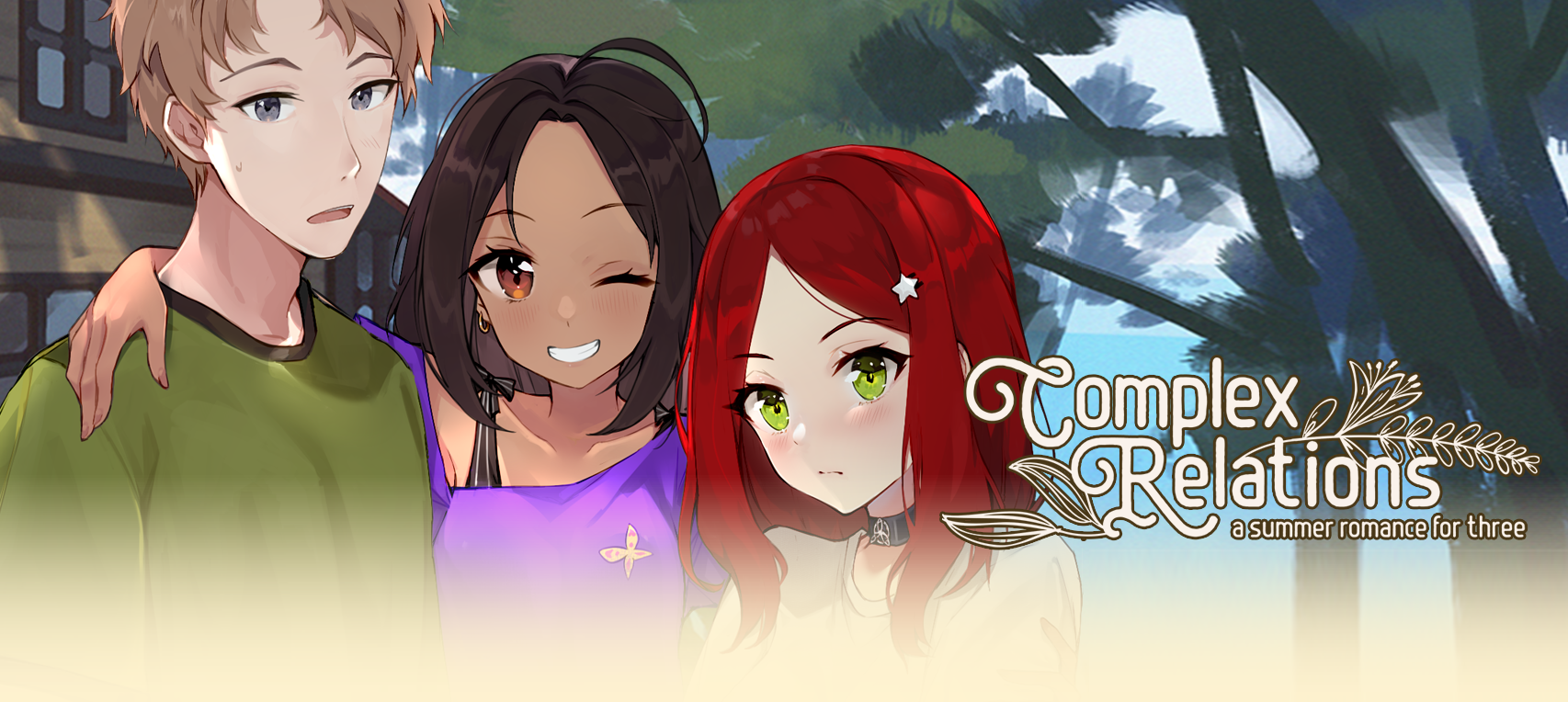Character Design: Style focus vs. Character focus
I hope people haven’t been missing these devlogs too much in their recent absence. Although I could definitely think of things to write about every week, by default I don’t feel like everything I write about is necessarily relevant enough to other people to be worth sharing; I wrote one up a couple weeks ago which is still unpublished. But, I had a subject in mind this time which I thought seemed worth sharing around.
One of the most frequently praised features of Complex Relations is its character art, which of course I’m not responsible for. But, I was closely involved with the visual design of the characters, and Hoshiineko has been extremely attuned to the details that go into expressing those characters’ personalities. So, I thought it might be worth exploring some of the process behind that.
I wanted Complex
Relations to have a strongly character-focused approach to design.
What does that actually mean? You could think of it as an alternative
to style-focused design. With a style-focused approach, the
characters’ appearances are meant to cultivate a look which the
designer thinks will look cool, or help apply their aesthetic vision
to the setting, but isn’t necessarily intended to say anything
about the characters and the choices that go into their
self-presentation.

A bold fashion choice from a character who lives on a tropical island
With character-focused design on the other hand, one of the basic
premises is that the characters can actually see themselves in a
mirror. They dress themselves, and know what other people see when
they look at them. Their choices about how to present themselves
reflect how much thought and effort they put, or don’t put, into
the subject. There might not be an in-story answer to the question
“why does Lulu wear a dress made out of belts?” but there is an
in-story reason why Vani has a butterfly on her shirt. That’s not
just authorially dictated symbolism- after all, Vani bought the top
herself.
The influence runs in the other direction too. After all, people also know about the things about their own appearances that they can’t change, and how other people see them, and that affects how they think about themselves.
Style-focused design offers answers to questions like “Why does this character look the way they do? What does it say about them?” But the answers are grounded in first-glance impressions. It’s not meant to sustain lines of questioning like “how long does it take to do up all those belts?” or “is this character’s hair naturally that color, or do they dye it?”

Pictured, a character who might spend all day doing his hair.
This is one of the reasons Complex Relations sticks to a palette of actual human hair colors. In a fantasy setting, if you see a character with purple hair, you can assume they probably have purple hair. In a game set in a Japanese high school on the other hand, that assumption becomes a lot shakier. Does the character deliberately coordinate her outfit around her purple hair? Does it affect how she sees herself as a person? Those are questions the writer probably didn’t dwell on much, and doesn’t want the audience to either. In contrast, Alexa’s hair looks red because it’s actually red; she knows it, and it definitely affects how she thinks of herself.
If anyone’s wondered about the design on Alexa’s choker by the way, and can’t make it out, it’s a Celtic knot. Feel free to speculate on why she picked it out.

There’s at least one other approach to character design, setting-focused, where the character designs are intended to be revealing of elements of the setting, like what sorts of clothes people have access to in what social classes, what equipment designs suggest about the functions they’re built for, how much styles are location-bound versus spread around by travel and trade, etc. A lot of fantasy works use style-based design when they could get a lot of mileage out of setting-based design… but that might be a devlog subject for another game.
Get Complex Relations
Complex Relations
A hot summer romance for three
| Status | In development |
| Author | Amai Works |
| Genre | Visual Novel |
| Tags | 2D, Anime, Coming Of Age, Erotic, relationship, Ren'Py, Romance |
| Languages | English |
More posts
- Complex Relations updated demo releaseApr 16, 2025
- Complex Relations currently live on Kickstarter!Dec 24, 2021
- Kickstarter Launch Date SetDec 15, 2021
- Variable sex scenesOct 02, 2021
- Back on track for launchSep 26, 2021
- Delay to Kickstarter LaunchJun 01, 2021
- Moving towards KS launchMay 10, 2021
- Writing SexMay 02, 2021
- Update: KS video now in developmentApr 15, 2021

Leave a comment
Log in with itch.io to leave a comment.